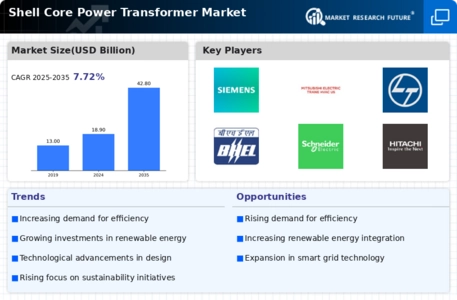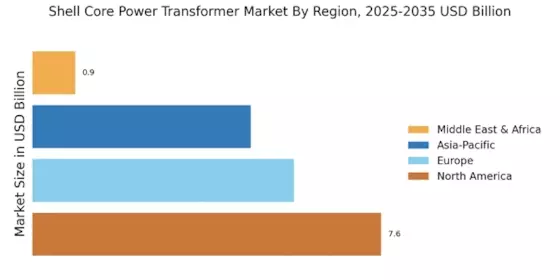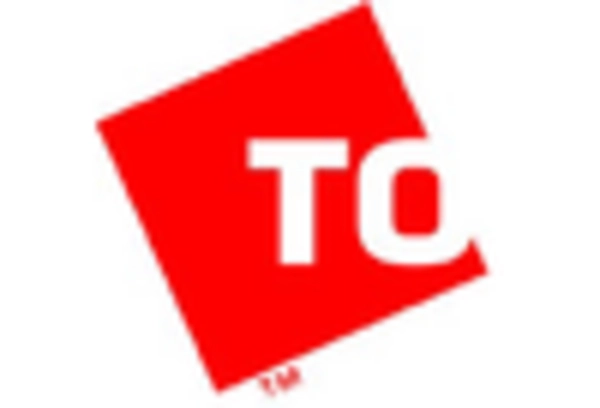Regulatory Compliance and Standards
Regulatory compliance and standards are driving changes within the Shell Core Power Transformer Market. Governments and regulatory bodies are implementing stringent efficiency and safety standards for electrical equipment, including transformers. Compliance with these regulations is essential for manufacturers to remain competitive and avoid penalties. Recent regulations have mandated that transformers meet specific efficiency ratings, which has prompted manufacturers to innovate and improve their designs. This regulatory landscape not only ensures the safety and reliability of power systems but also encourages the adoption of more efficient technologies. As a result, the Shell Core Power Transformer Market is likely to witness a shift towards compliance-driven innovations that align with evolving standards.
Expansion of Renewable Energy Sources
The Shell Core Power Transformer Market is poised for growth due to the expansion of renewable energy sources. As countries increasingly invest in solar, wind, and hydroelectric power, the demand for transformers that can efficiently integrate these energy sources into existing grids is rising. Shell core transformers are particularly well-suited for this application, as they offer high efficiency and reliability. Recent statistics indicate that renewable energy capacity is expected to grow by over 50% in the next five years, necessitating the deployment of advanced transformer technologies. This shift not only supports energy diversification but also enhances the resilience of power systems, making the Shell Core Power Transformer Market a focal point for future investments.
Infrastructure Development Initiatives
Infrastructure development initiatives are significantly influencing the Shell Core Power Transformer Market. Governments and private sectors are investing heavily in upgrading and expanding electrical infrastructure to meet growing energy demands. This includes the construction of new power plants and the modernization of existing facilities, which often require advanced transformer technologies. Data suggests that infrastructure investments in the energy sector are projected to reach trillions of dollars over the next decade. As a result, the Shell Core Power Transformer Market is likely to benefit from increased orders for transformers that can support higher capacities and improved grid stability. This trend underscores the critical role of transformers in facilitating infrastructure growth.
Increasing Demand for Energy Efficiency
The Shell Core Power Transformer Market is experiencing a notable surge in demand for energy-efficient solutions. As energy costs continue to rise, utilities and industries are increasingly seeking transformers that minimize losses and enhance operational efficiency. According to recent data, energy-efficient transformers can reduce energy losses by up to 30%, which is a compelling incentive for investment. This trend is further supported by initiatives aimed at reducing carbon footprints, as energy efficiency is a critical component of sustainability strategies. Consequently, manufacturers in the Shell Core Power Transformer Market are innovating to produce transformers that not only meet but exceed energy efficiency standards, thereby positioning themselves favorably in a competitive landscape.
Technological Innovations in Transformer Design
Technological innovations are reshaping the Shell Core Power Transformer Market, as manufacturers strive to enhance performance and reliability. Advances in materials science and engineering have led to the development of transformers that are lighter, more compact, and capable of operating at higher efficiencies. For instance, the introduction of amorphous steel cores has been shown to reduce energy losses significantly. Furthermore, smart transformer technologies are emerging, enabling real-time monitoring and diagnostics. These innovations not only improve operational efficiency but also extend the lifespan of transformers, making them more appealing to utilities and industrial users. As such, the Shell Core Power Transformer Market is likely to see increased adoption of these advanced technologies.


















Leave a Comment